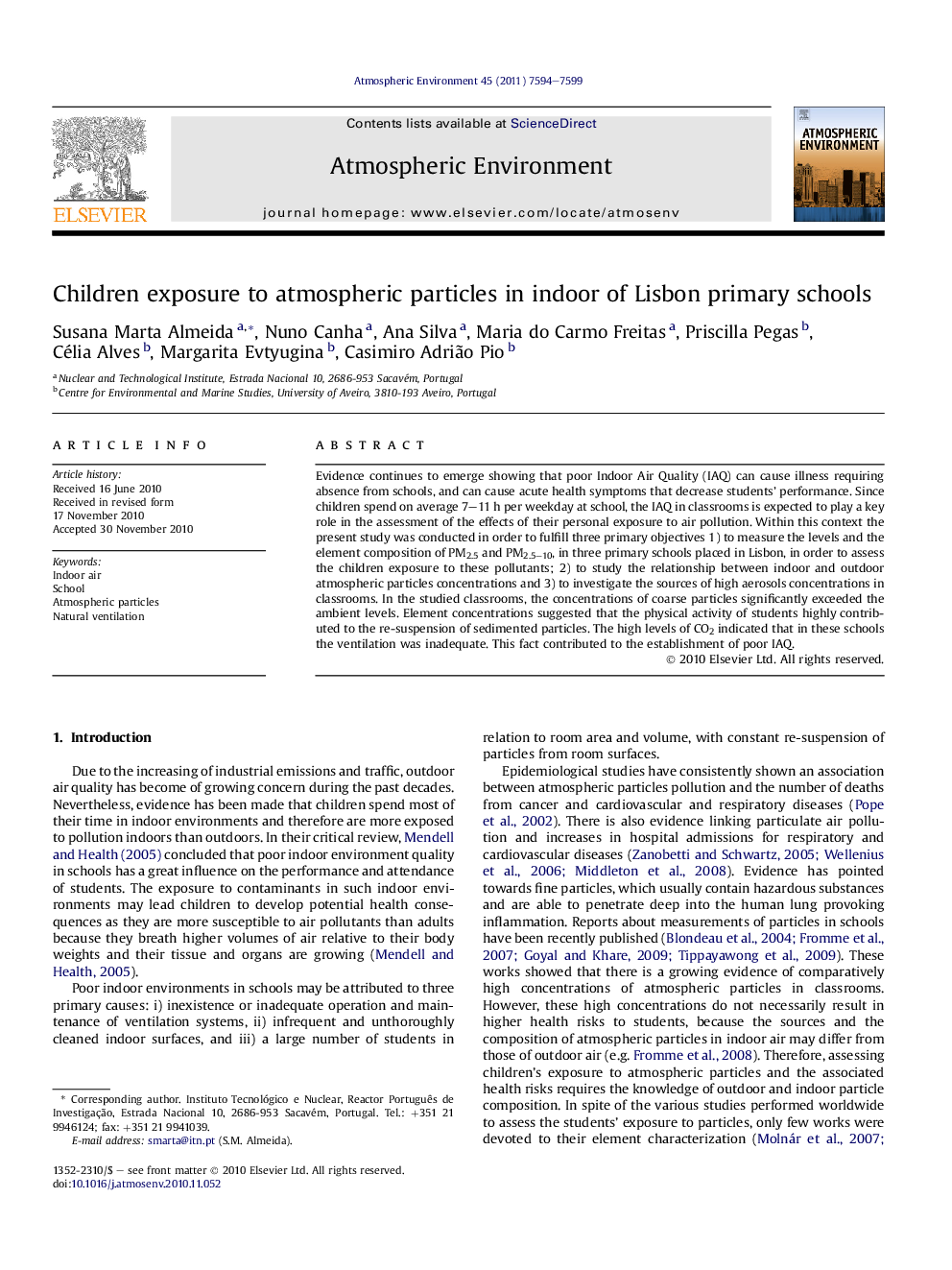| Article ID | Journal | Published Year | Pages | File Type |
|---|---|---|---|---|
| 4439386 | Atmospheric Environment | 2011 | 6 Pages |
Evidence continues to emerge showing that poor Indoor Air Quality (IAQ) can cause illness requiring absence from schools, and can cause acute health symptoms that decrease students’ performance. Since children spend on average 7–11 h per weekday at school, the IAQ in classrooms is expected to play a key role in the assessment of the effects of their personal exposure to air pollution. Within this context the present study was conducted in order to fulfill three primary objectives 1) to measure the levels and the element composition of PM2.5 and PM2.5–10, in three primary schools placed in Lisbon, in order to assess the children exposure to these pollutants; 2) to study the relationship between indoor and outdoor atmospheric particles concentrations and 3) to investigate the sources of high aerosols concentrations in classrooms. In the studied classrooms, the concentrations of coarse particles significantly exceeded the ambient levels. Element concentrations suggested that the physical activity of students highly contributed to the re-suspension of sedimented particles. The high levels of CO2 indicated that in these schools the ventilation was inadequate. This fact contributed to the establishment of poor IAQ.
► In classrooms, PM2.5–10 concentrations significantly exceed the ambient concentrations. ► Physical activity of the children led to re-suspension and increased levels of particles. ► In classrooms, mineral dust, building materials and chalk are important sources of particles. ► High CO2 levels indicate that inadequate ventilation contributes for poor IAQ. ► Measurements of outdoor particles do not provide an accurate estimation of children’s exposure.
